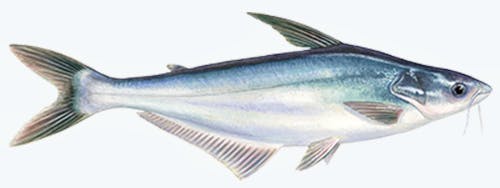All feed formulas developed by Aller Aqua at the Aller Aqua Research Centre follow these requirements to ensure proper growth and health:
Protein Needs: Pangasius has moderate protein requirements, generally between 22–30% crude protein, depending on the growth stage. Juveniles need higher levels, while adults thrive on lower-protein diets.
Fat and Energy Needs: Lipid levels typically range from 5–8%, supplying necessary energy and essential fatty acids. Pangasius efficiently converts feed into body mass, making it cost-effective.
Essential Nutrients:
The diet must be supplemented with:
Vitamins: A, C, D, E, B-complex – for immunity and metabolism
Minerals: Phosphorus, calcium, zinc, selenium – for bone health and growth
Additives: Enzymes, antioxidants, and probiotics are often included to improve digestion, boost immunity, and reduce disease risk.
